Tom's Hardware Verdict
This model delivers exceptional sequential performance for working with large files, but it lacks the performance in random workloads to be a class-leading mainstream NVMe SSD. The drive works well for specific applications, but there are better alternatives.
Pros
- +
Strong sequential performance for creatives
- +
Impressive first-gen design
- +
Controller architecture
- +
High Performance overall
- +
High quality
- +
Software bundle with Dashboard features
Cons
- -
Initial firmware anomalies
- -
Expensive compared to emerging products
- -
Could use additional firmware tuning
Why you can trust Tom's Hardware
Specifications & Pricing
The SanDisk Extreme Pro M.2 NVMe 3D SSD is like the hot sister of Western Digital's new enthusiast SSDs. We tested the WD Black SSD recently and found it to be a worthy alternative to the Samsung 960 EVO. SanDisk's first consumer NVMe SSD has the same components, performance, and price, as the Black, but it targets a different type of user.
SanDisk products have always been marketed specifically to photographers, videographers, and other so-called "creative" types. The category has grown over the years, but companies can't restrict excellent products to specific applications. The SanDisk Extreme, Extreme II, and Extreme Pro are all good examples of breakout products that bled over to the enthusiast market.
The Extreme Pro SATA SSD was more than just an excellent product, though; it was the best for years. It was also the last Extreme Pro branded SSD to come to market. Even though the new WD and SanDisk SSDs use the same components, we had several reasons for not combining them into the same review. The Black branding has its own storied history that dates back to the days of spinning disks, but the Extreme Pro was a giant among flash. The Extreme Pro was the first consumer SSD with a ten-year warranty period, so early adopters still have up to six years of warranty coverage left.
The Extreme Pro raised the warranty bar, and Samsung was forced to match it with the 850 Pro. In most capacities, the Extreme Pro delivered better performance. For years, the two companies battled it out with performance-improving firmware updates.
Today we'll see if the new SanDisk Extreme Pro M.2 NVMe 3D SSD is a gem like its predecessor, or if it's just another rock in a growing pile of NVMe SSDs.
SanDisk will bring its first retail consumer NVMe SSD to market in 1TB and 500GB capacities. The Extreme Pro delivers up to 3,400/2,800 MB/s of sequential read/write throughput. The 1TB model also boasts up to 500,000/400,000 random read/write IOPS, but these performance specifications vary by capacity. Most users will not notice these differences during normal use.
Features
We covered the full feature set in the WD Black 3D NVMe SSD review, so we won't go through the slide deck here. The important takeaways come from the controller that SanDisk has worked on for the last three years. It's a three-core controller designed by SanDisk using the latest NVMe 1.3 protocol and the company's new aggressive nCache 3.0 SLC buffer system, which boosts performance.
Pricing, Warranty, & Endurance
SanDisk covers the new Extreme Pro NVMe series with a five-year warranty that covers up to 300TB of data writes for the 500GB model and 600TB for the 1TB drive. Pricing at retail appears to be holding steady at $229.99 and $449.99, respectively.
Packaging
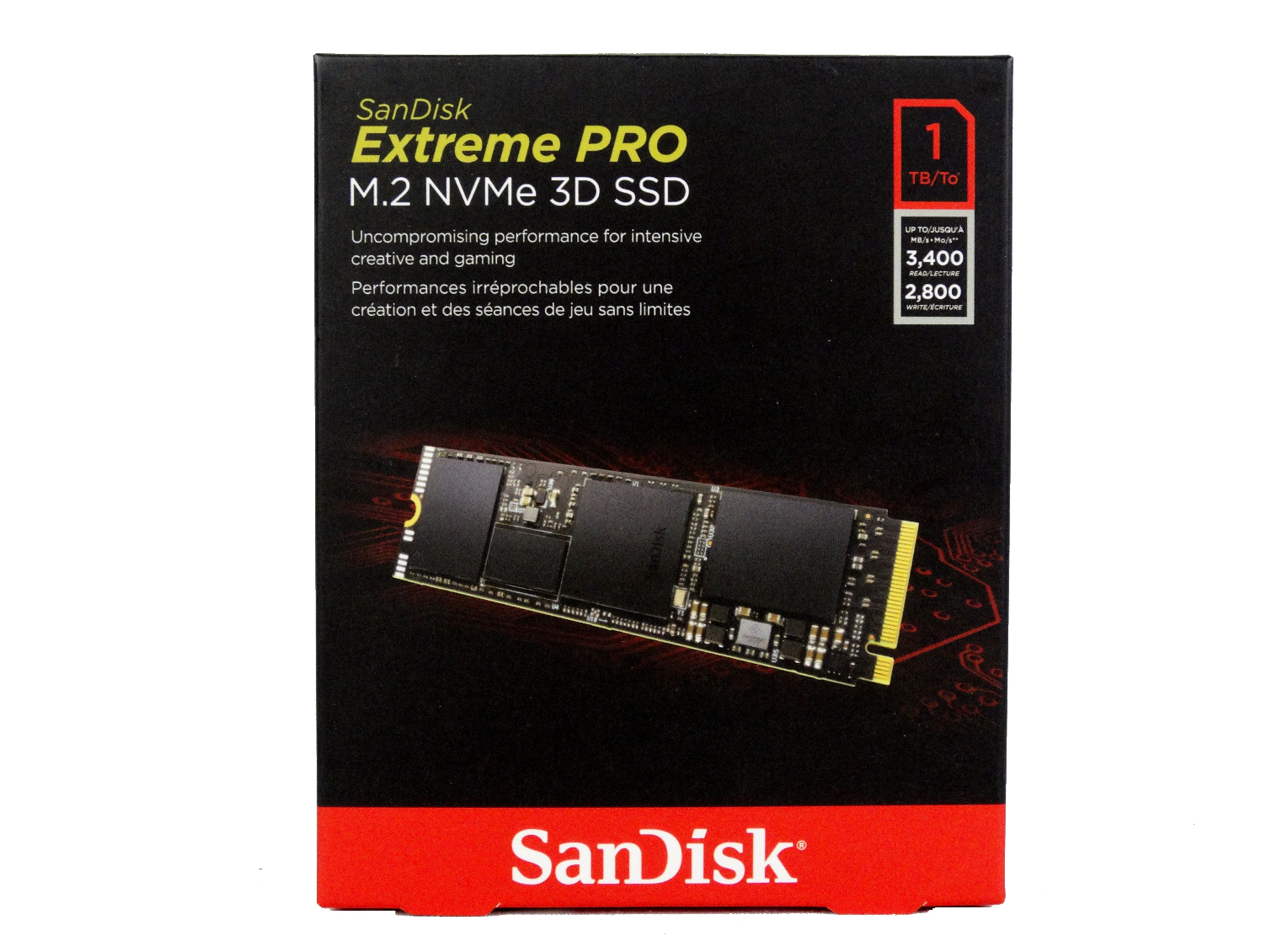
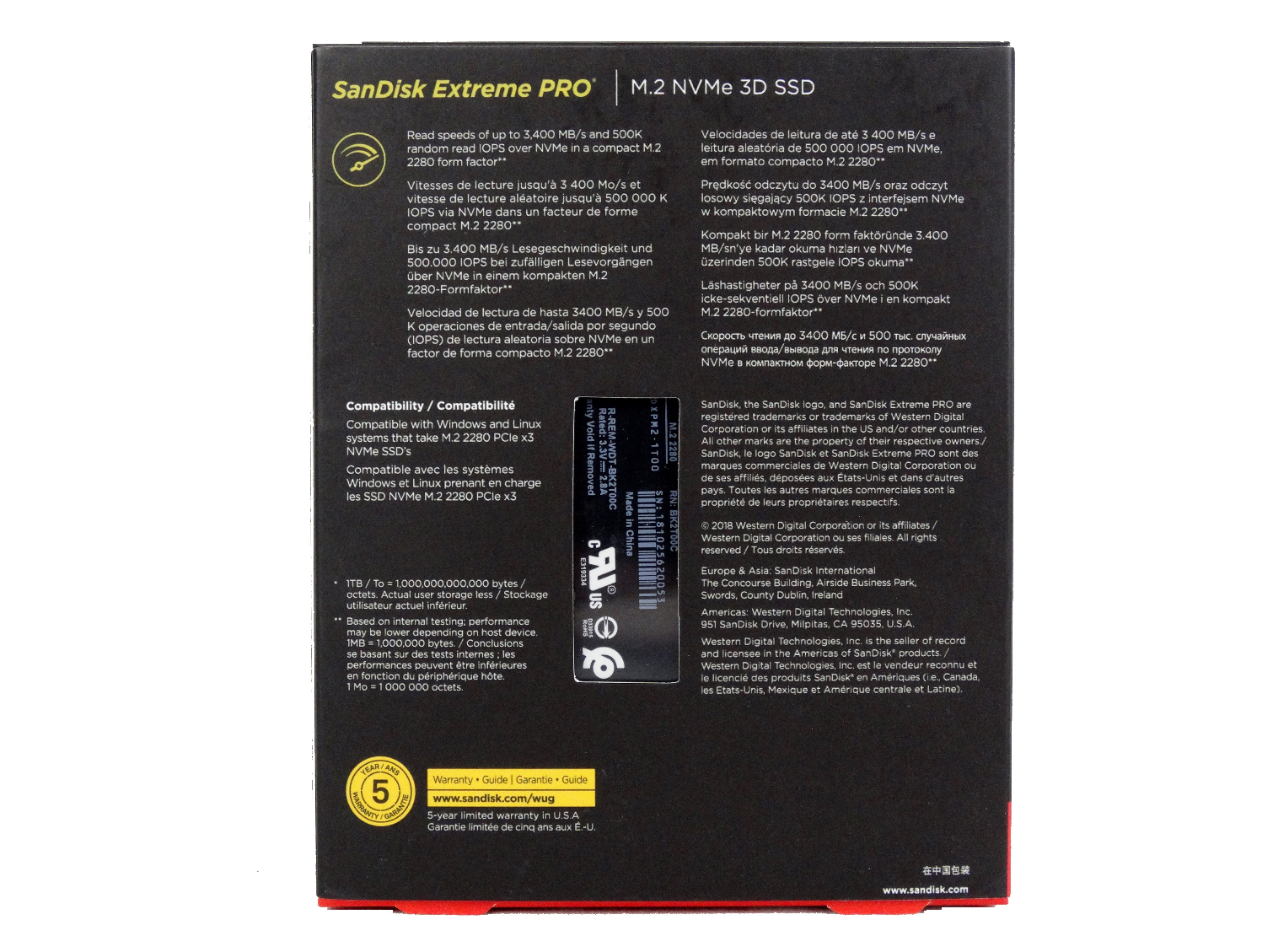
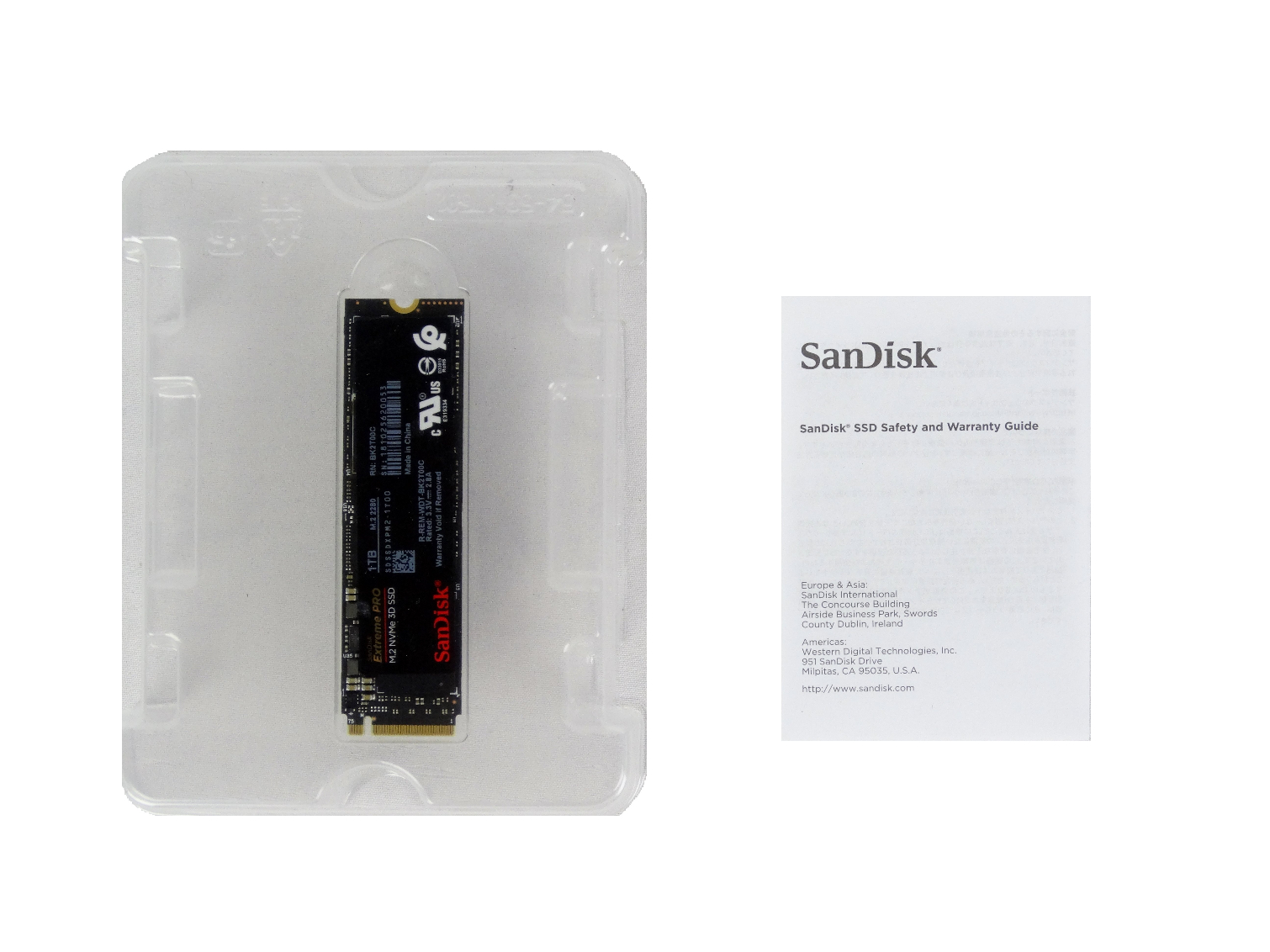
The new Extreme Pro comes to market with a better-looking retail package than the WD Black, but it conveys the same information on the box.
A Closer Look
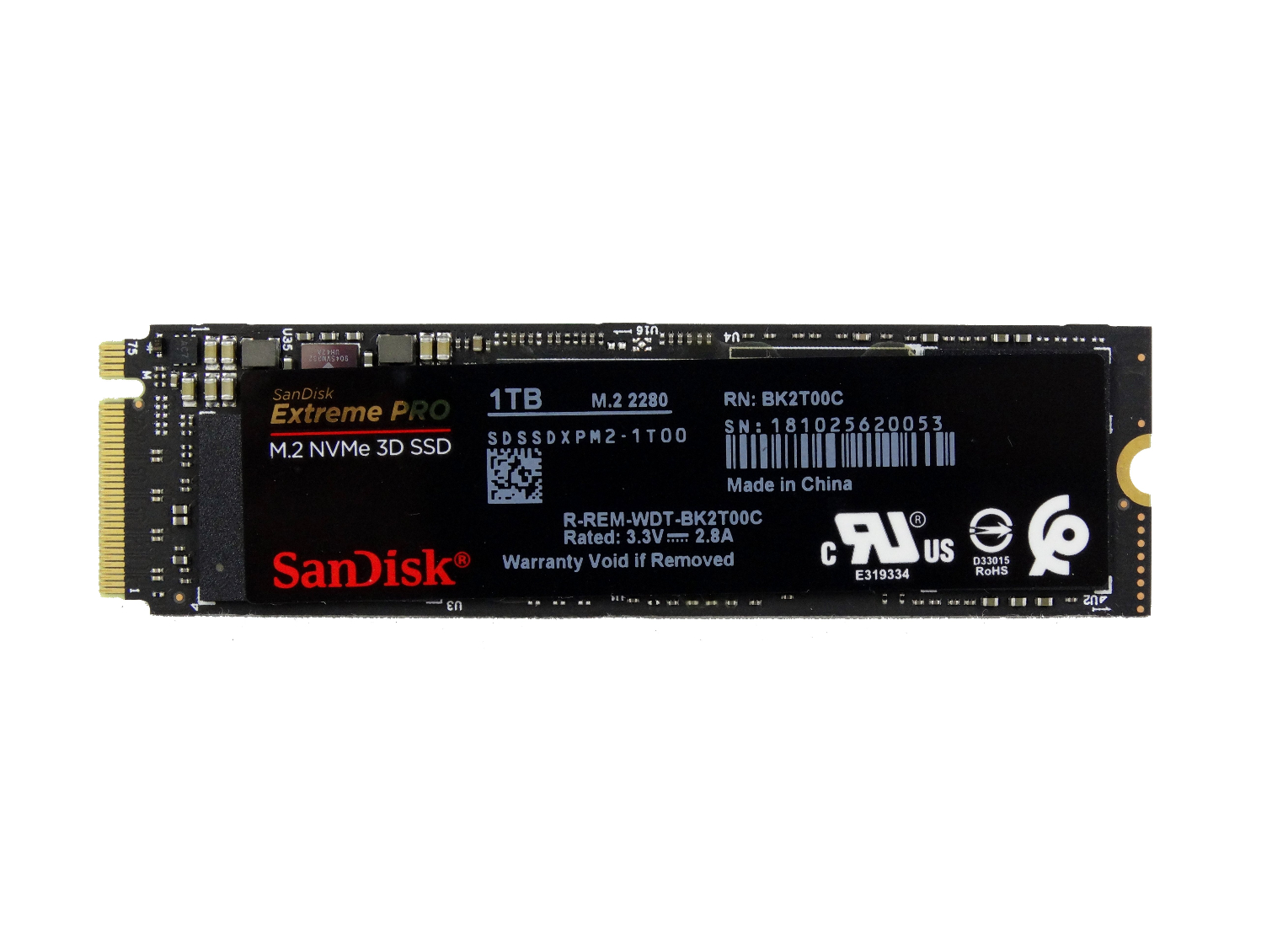
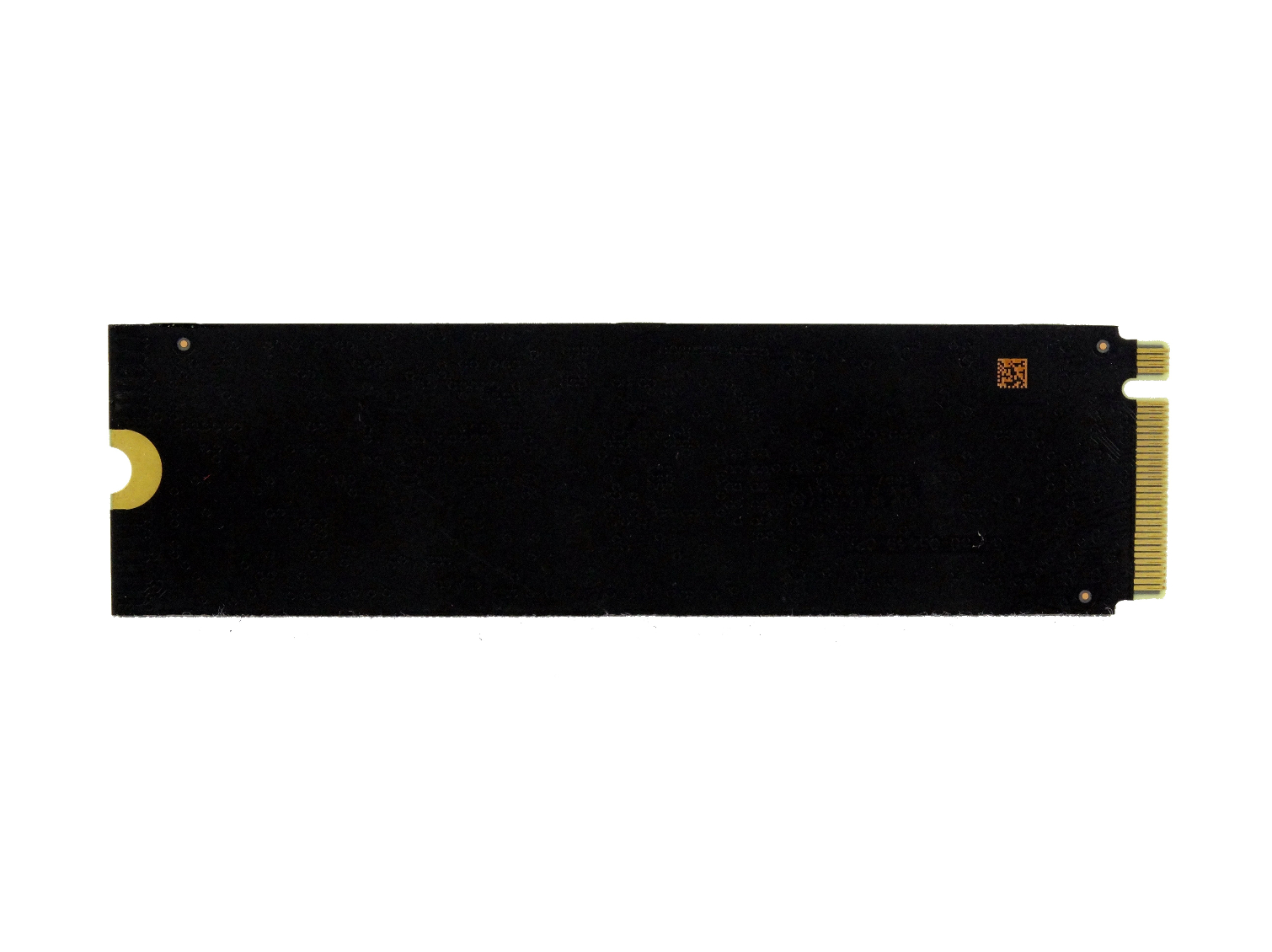
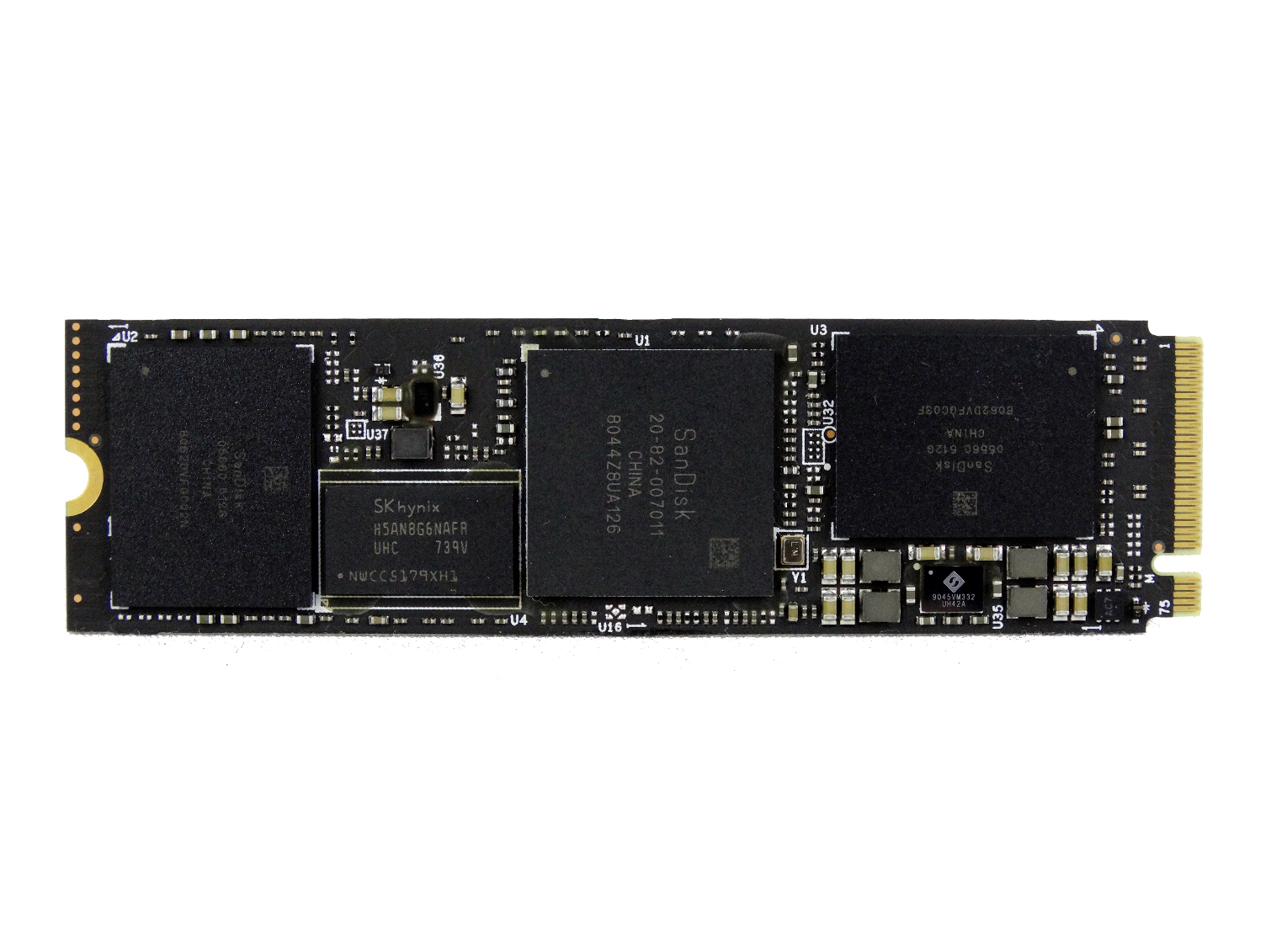
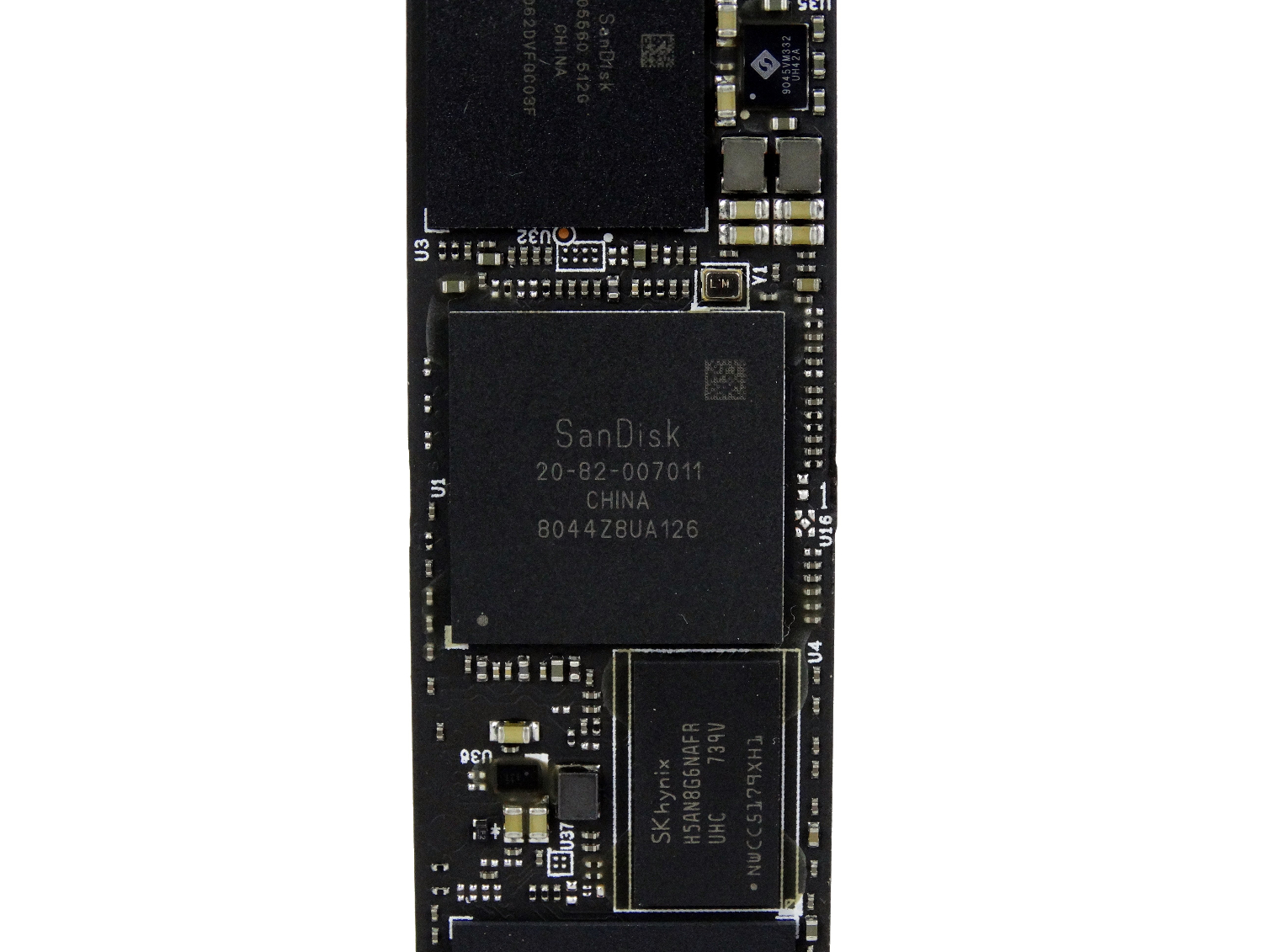
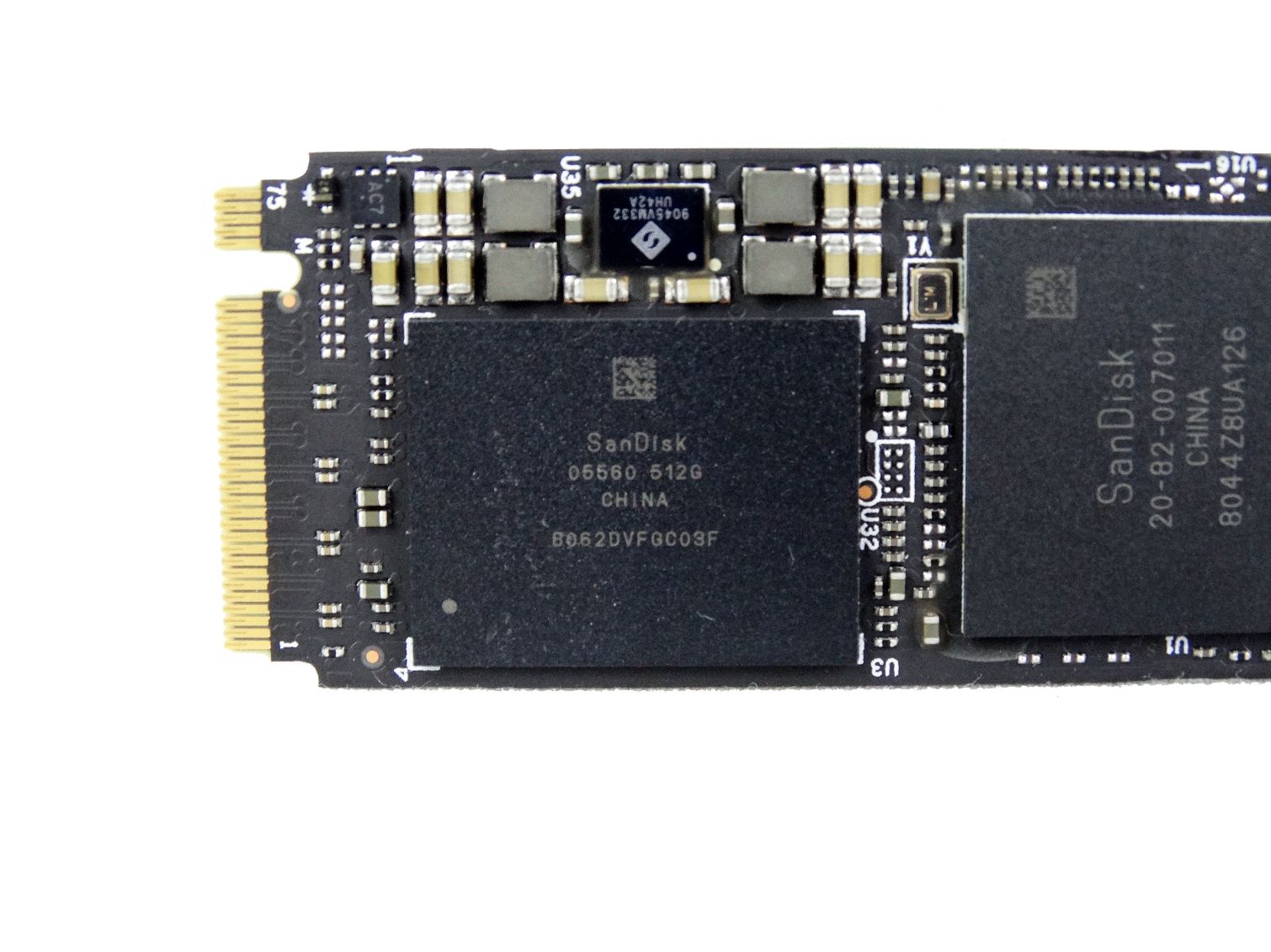
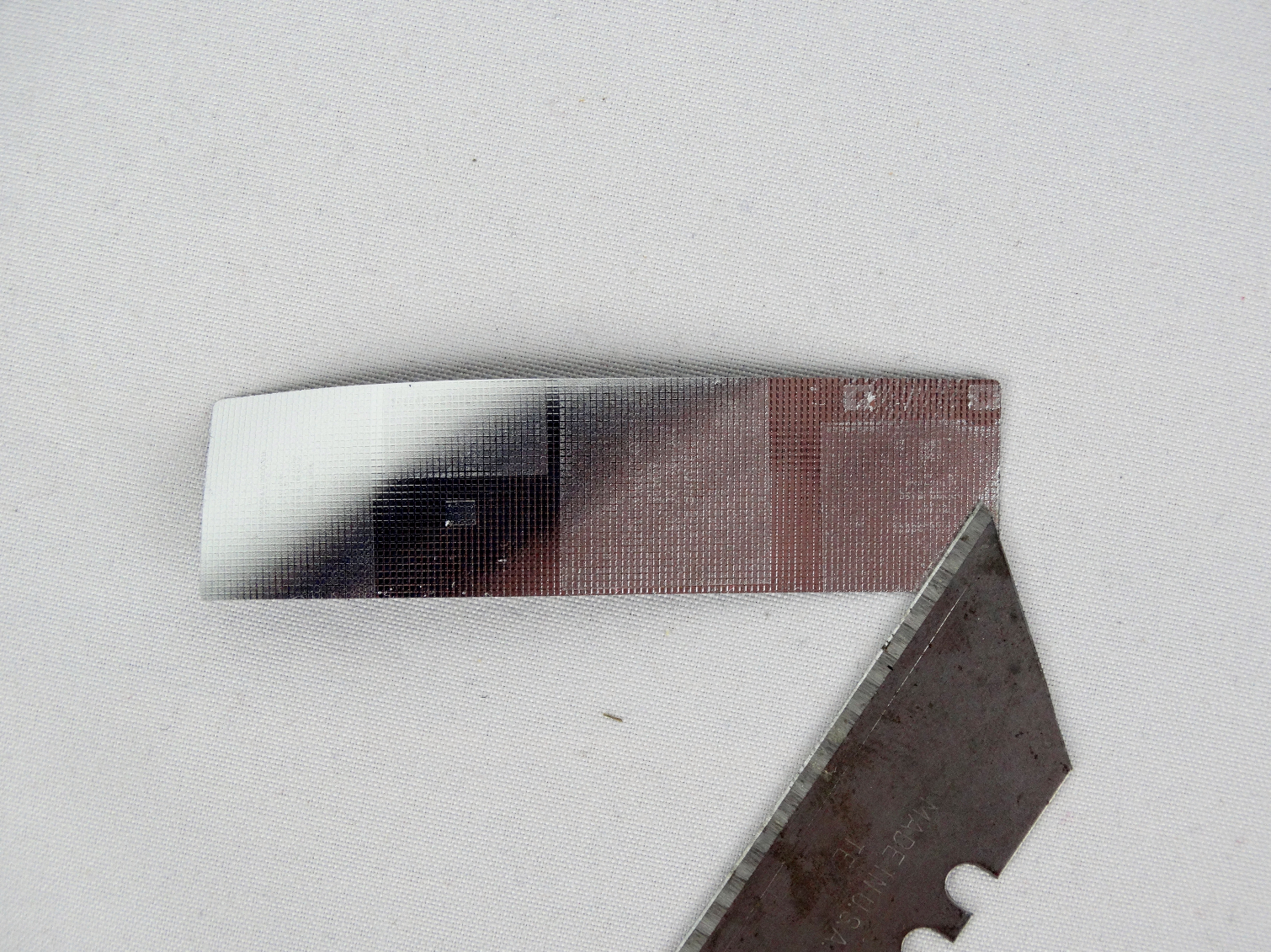
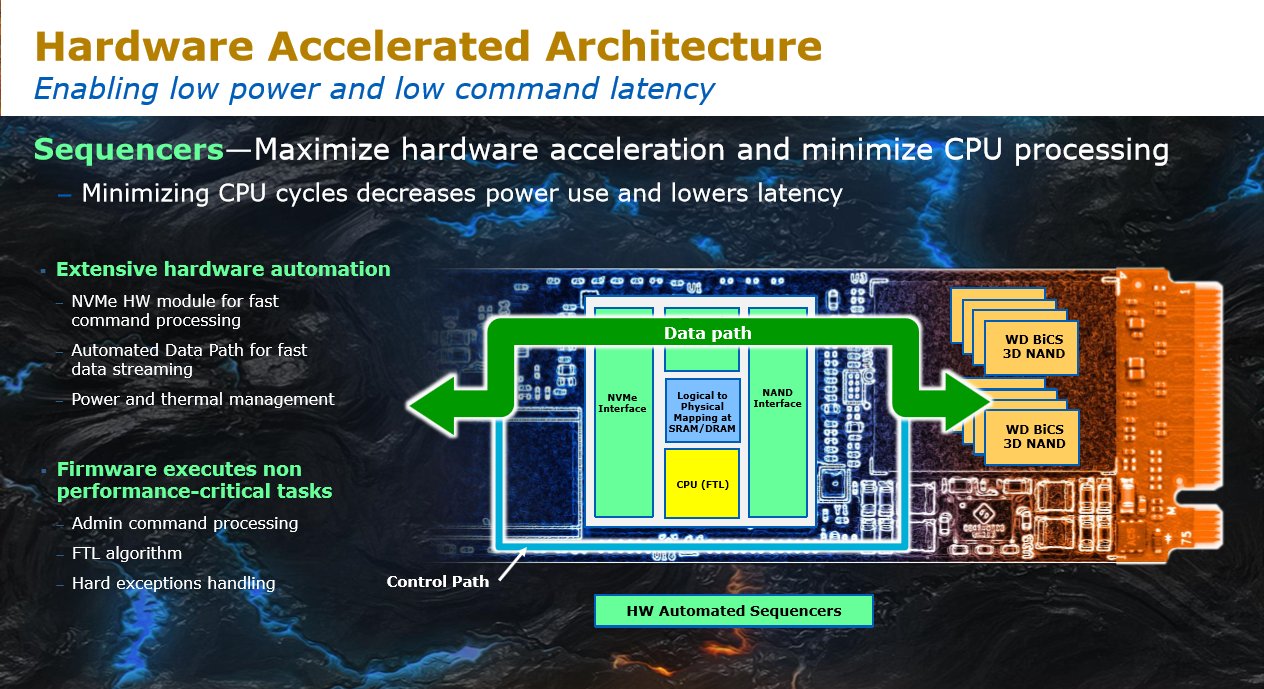
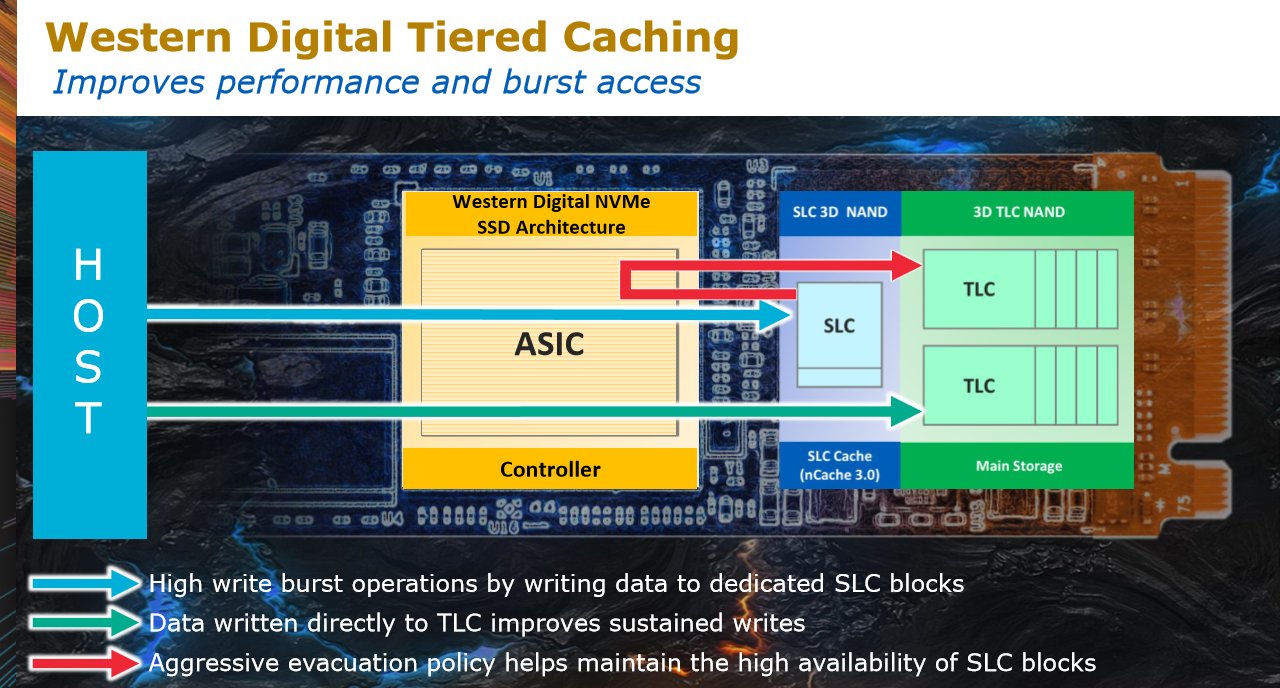
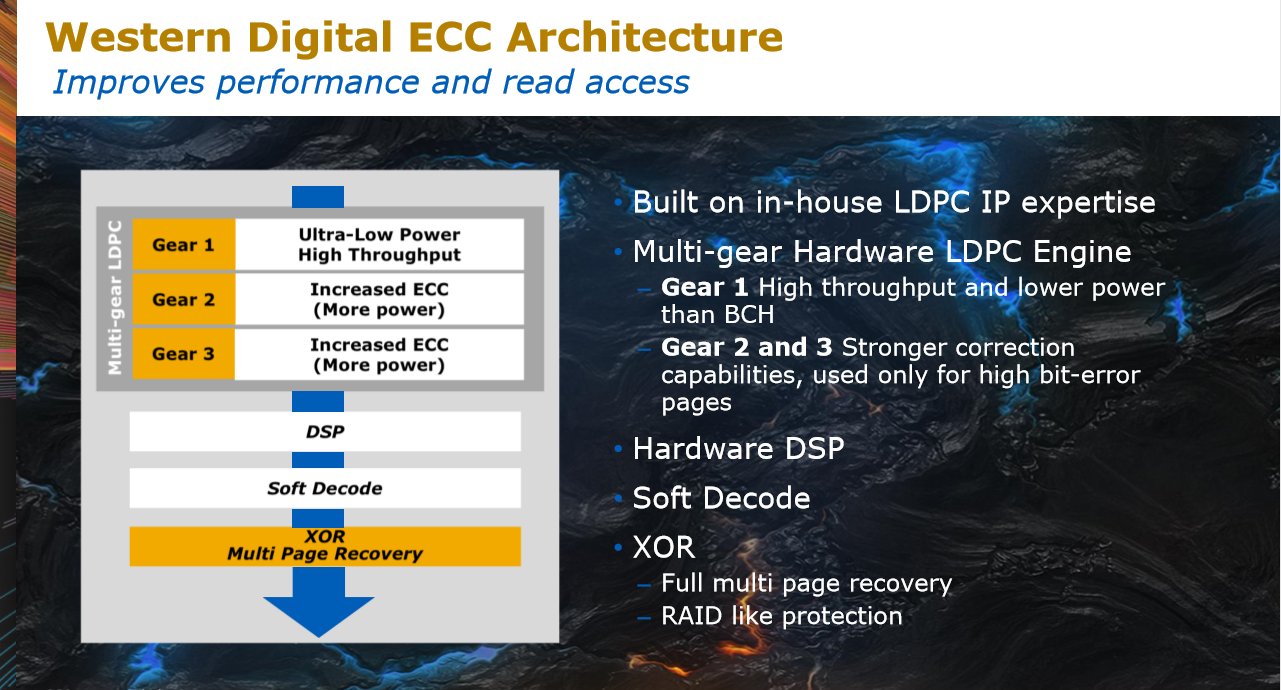
We thought the Extreme Pro's metal sticker would make it faster than the new Black, which comes with a plastic sticker, but it turned out to be nothing at all. In our testing, neither SSD entered a thermal throttling condition during typical workloads, so the sticker doesn't appear to have an impact.
Specifications
| Row 0 - Cell 0 | SanDisk Extreme Pro M.2 3D NVMe (1TB) | SanDisk Extreme Pro M.2 3D NVMe (512GB) |
| Capacity (Raw / User) | 1024GB / 1000GB | 512GB / 500GB |
| Form Factor | M.2 2280 S3 | M.2 2280 S3 |
| Interface / Protocol | PCIe 3.0 x4 / NVMe 1.3 | PCIe 3.0 x4 / NVMe 1.3 |
| Controller | SanDisk Custom 8-Channel 3-Core | SanDisk Custom 8-Channel 3-Core |
| DRAM | 1GB DDR3 | 512GB DDR3 |
| NAND | SanDisk 64L TLC | SanDisk 64L TLC |
| Sequential Read | 3,400 MB/s | 3,400 MB/s |
| Sequential Write | 2,800 MB/s | 2,500 MB/s |
| Random Read | 500,000 IOPS | 410,000 IOPS |
| Random Write | 400,000 IOPS | 330,000 IOPS |
| Encryption | ✗ | ✗ |
| Endurance | 600 TBW | 300 TBW |
| Product Number | SDSSDXPM2-1T00-G25 | SDSSDXPM2-500G-G25 |
| Warranty | 5-Years | 5-Years |
MORE: Best SSDs
MORE: How We Test HDDs And SSDs
MORE: All SSD Content
-
marcelo_vidal still testing without meltdown and spectre patch!???? Our that review will be what we will get ???Reply -
Giroro You guys really need to invest in a 1TB Intel 760p - It performs way better and it is priced very similarly to the 600p.Reply
I'm not even sure if Intel is still making the 600p any more because the pricing is inconsistent and there's no official Amazon/Newegg listing only third party/resellers. -
CRamseyer Reply20987890 said:still testing without meltdown and spectre patch!???? Our that review will be what we will get ???
It takes time to retest the 180 or so drives needed for SATA and NVMe to fill the different capacity charts. The newer tests we're dropping in like the Final Fantasy load time run on a fully patched system. Please keep in mind that patches are still coming out. Just this week a new Intel patch arrived so every existing retest result is invalid...again.
The patches do not change the ranking. The fastest drive before the patch is still the fastest drive after. The only question is how much percent gets shaved off of every single product. In our testing so far it's a linear drop. -
CRamseyer Reply20988439 said:You guys really need to invest in a 1TB Intel 760p - It performs way better and it is priced very similarly to the 600p.
I'm not even sure if Intel is still making the 600p any more because the pricing is inconsistent and there's no official Amazon/Newegg listing only third party/resellers.
The 600p represents a number of drives purchased last year with the SMI SM2260 controller and 1st gen IMFT 3D flash. The 760p uses the SM2262 controller and 2nd gen IMFT 3D flash. It's a good drive but we've shown that the Adata SX8200 and HP EX920 are better due to improved firmware. Even if I had a 1TB 760p, it wouldn't likely appear in many reviews.
